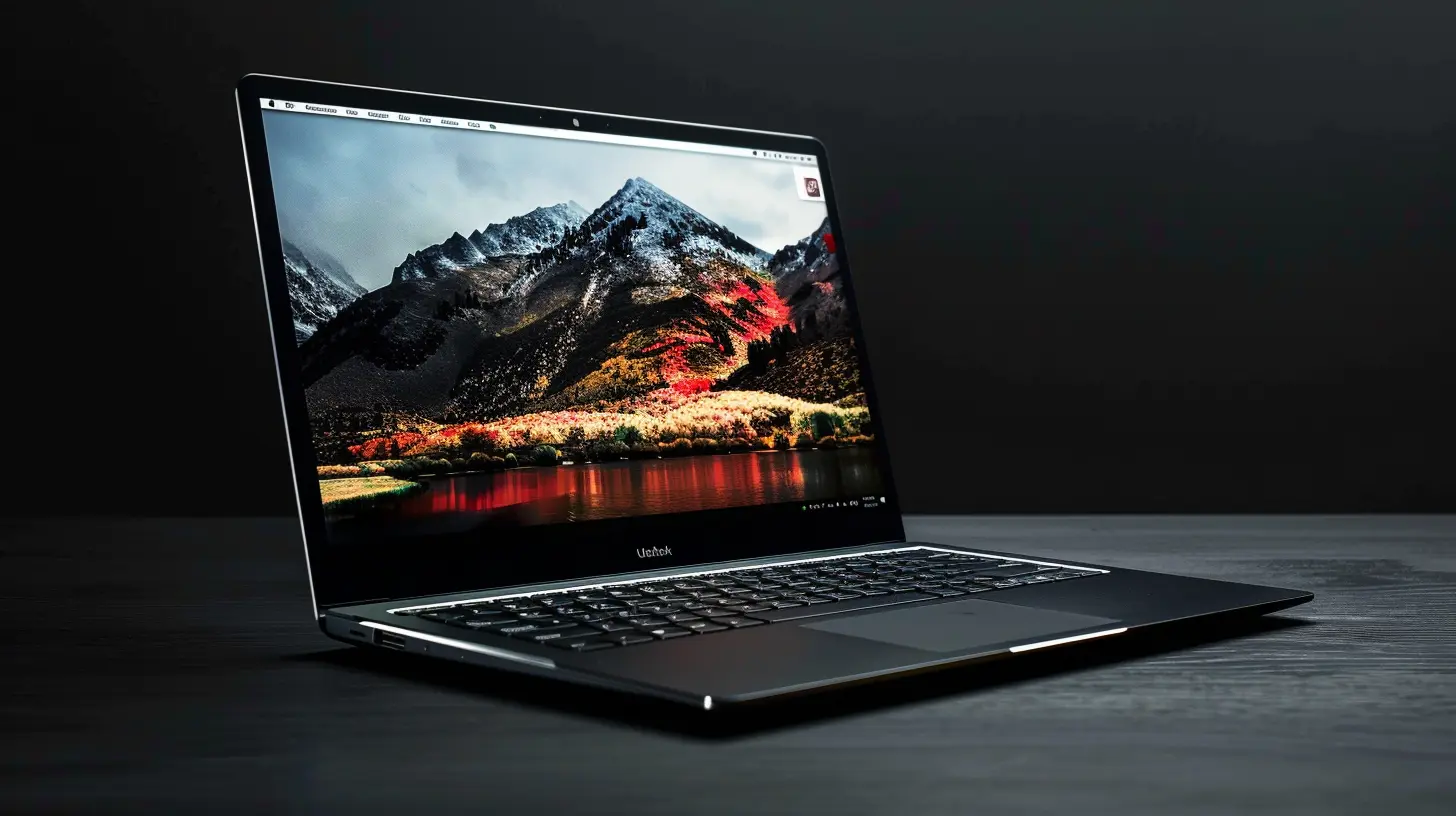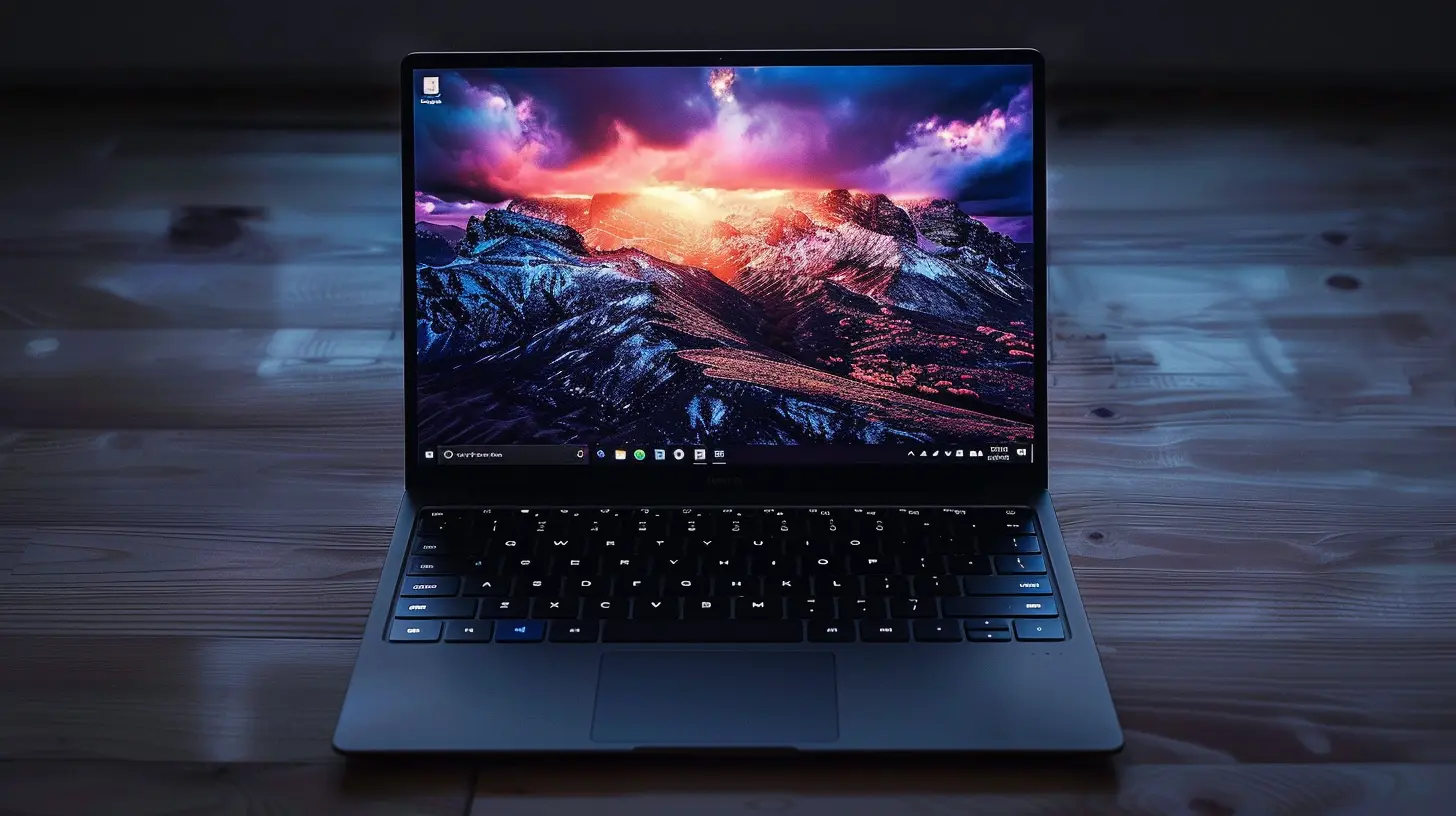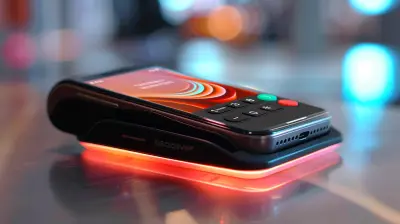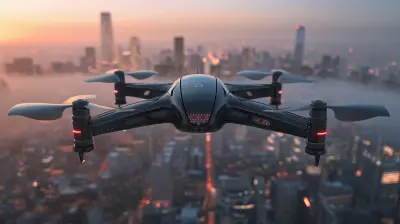How Ultrabooks Are Pushing the Boundaries of Thin-and-Light Design
20 April 2025
The tech world is a stage where innovation dances relentlessly, and nowhere is this performance more dazzling than in the sleek, almost ethereal realm of ultrabooks. These wafer-thin machines aren't just about looking good—they're shattering limits, redefining portability, and proving that power doesn't have to come in a bulky frame.
But how did we get here? How are ultrabooks rewriting the rules of thin-and-light design? Buckle up, because we're diving deep into the engineering marvels that make these featherlight beasts possible.

The Evolution of Ultrabooks: From Clunky to Cloud-Like
Remember the era of thick, heavy laptops that felt more like bricks than tech companions? Not too long ago, portability was just an afterthought. Laptops were beefy, cumbersome, and certainly not something you'd carry without a bit of backache.Then came Intel's vision of the ultrabook—a category of laptops marrying power with elegance. It wasn't just about reducing weight; it was about rethinking how a laptop should feel in your hands. And boy, did they deliver.
Fast forward to today, and ultrabooks have become the gold standard for professionals, students, and anyone who values mobility without sacrificing performance.
Shaving Off Millimeters: The Science Behind the Thin
So, what’s the magic trick? How do manufacturers keep slicing off millimeters while keeping ultrabooks as capable as ever? Turns out, it’s a combination of clever engineering, material science, and cutting-edge innovation.1. Better, Lighter Materials
The first rule of making something thinner? Ditch the heavy metals. Modern ultrabooks use magnesium alloys, carbon fiber, and aerospace-grade aluminum to maintain durability while cutting down weight.💡 Think of it like baking a cake: You want the fluffiest texture possible, but without losing structure. The same applies to ultrabooks—light yet sturdy.
2. Fanless and Efficient Thermal Designs
Cooling is often the biggest hurdle in thin devices. Traditional laptops rely on bulky fans, but ultrabooks leverage:- Vapor chambers that distribute heat evenly
- Heat pipes that transfer warmth away from critical components
- Low-power, high-efficiency processors that generate less heat
The result? Machines that don’t get dangerously hot, even when you're pushing them to their limits.
3. SSDs Replacing Hard Drives
Gone are the days of spinning disks! Ultrabooks rely on solid-state drives (SSDs) that are:✅ Smaller
✅ Faster
✅ More power-efficient
This not only boosts speed but also eliminates bulky hard drive components, making devices more compact.
4. Edge-to-Edge Displays with Minimal Bezels
Remember when laptops had fat, unnecessary bezels? That extra space was just wasted real estate. Modern ultrabooks have almost edge-to-edge displays, cutting down the footprint without sacrificing screen size.It’s like fitting a big-screen movie experience into the smallest frame possible—compact, immersive, and stunning.
The Battle Between Thinness and Performance
“But wait,” you ask, “if ultrabooks keep getting thinner, doesn’t that mean performance takes a hit?”Fair question. A few years ago, we might have nodded hesitantly. But thanks to leaps in processor technology, battery optimization, and software efficiency, ultrabooks are now performance powerhouses in their own right.
Powerful Yet Efficient Processors
Long gone are the days when thin meant weak. Modern ultrabooks feature Intel Core i7, i9, and even AMD Ryzen chips that deliver desktop-like performance in a razor-thin form factor.All-Day Battery Life Without the Bulk
Who wants to lug around a charger? No one. Ultrabooks often boast 10+ hours of battery life, thanks to:- Smarter power management
- More efficient chipsets
- Larger, denser batteries that fit into smaller spaces
Pair that with fast-charging tech, and running out of juice becomes a rare concern.
The Future of Ultrabooks: What’s Next?
Ultrabooks aren’t slowing down. If anything, they’re only scratching the surface of what’s possible. Here’s where things might head next:1. Foldable and Dual-Screen Designs
Imagine an ultrabook that folds like a book or has a dual-screen setup, replacing the traditional keyboard with a second interactive display. Companies like Lenovo and ASUS are already experimenting with this.2. ARM-Based Ultrabooks for Even Better Efficiency
Apple broke ground with its M-series chips, proving that ARM-based processors can outclass traditional ones. Expect more ultrabooks to follow suit, delivering insane battery life and performance.3. AI-Powered Computing
Artificial intelligence isn’t just for smart assistants. Future ultrabooks may utilize AI-driven performance boosts, optimizing efficiency in real-time based on how you're using the device.So, Should You Get an Ultrabook?
If portability, power, and aesthetics matter to you (hint: they probably do), an ultrabook is a no-brainer. Whether you're a digital nomad, a student, or just someone who hates lugging around heavyweight tech, ultrabooks offer the best of both worlds.They’re proof that the thinnest designs often carry the loudest innovations. So next time you pick up an ultrabook, know that you’re holding a masterpiece of engineering, imagination, and pure tech brilliance.
all images in this post were generated using AI tools
Category:
UltrabooksAuthor:

John Peterson
Discussion
rate this article
8 comments
Ziva Patterson
Ultrabooks are so thin, I mistakenly tried to slide one under the couch instead of my remote. Who knew tech could make furniture disappear?
May 11, 2025 at 3:15 AM

John Peterson
Haha, that’s a great point! Ultrabooks are definitely blurring the lines between tech and everyday objects. Thanks for sharing your humorous take!
Colette McLaurin
Ultrabooks: the sleek ninjas of the tech world! They're so thin, they might just slip under the radar. Who knew laptops could do yoga? Let’s hope they don’t fold during a stretch!
April 30, 2025 at 12:21 PM

John Peterson
Thanks for the fun comment! Ultrabooks truly are redefining portability while maintaining performance. Let's hope they stay sturdy through all their "yoga"!
Zevin Dorsey
Great insights! Ultrabooks truly redefine portability and performance—excited to see how they continue to evolve in the tech landscape!
April 28, 2025 at 10:45 AM

John Peterson
Thank you! I share your enthusiasm for the future of ultrabooks as they continue to innovate in design and performance.
Isabelle McElroy
Great insights! Ultrabooks truly redefine portability and performance in today's tech landscape. Impressive advancements!
April 27, 2025 at 6:34 PM

John Peterson
Thank you! I’m glad you found the insights valuable—ultrabooks really do exemplify the perfect balance of portability and performance!
Elle Dillon
Ultrabooks are truly the superheroes of the tech world! 🌟 With their sleek design and powerful performance, they prove that great things come in wonderfully thin packages. Keep innovating!
April 27, 2025 at 12:29 PM

John Peterson
Thank you! Ultrabooks indeed combine style and power, redefining what we expect from portable devices. Exciting innovations lie ahead! 🌟
Onyx McGillivray
Ultrabooks are redefining portability and power, showcasing impressive engineering that prioritizes sleek designs without sacrificing performance. It’s exciting to see how far thin-and-light tech can go!
April 26, 2025 at 7:24 PM

John Peterson
Thank you! It’s inspiring to see how ultrabooks blend innovation and performance, truly setting new standards in portable computing.
Azura McIlroy
Impressive innovation in ultrabook design!
April 26, 2025 at 2:19 AM

John Peterson
Thank you! I'm glad you enjoyed the article and appreciate the advancements in ultrabook design!
Miranda Spencer
Great insights! It's exciting to see how ultrabooks are redefining portability without sacrificing performance. The emphasis on sleek design is truly impressive, making technology more accessible and stylish. Can't wait to see what innovations come next in this ever-evolving space! Keep up the great work!
April 20, 2025 at 4:58 AM

John Peterson
Thank you for your thoughtful comment! I'm glad you found the insights valuable. Exciting times indeed as ultrabooks continue to evolve!
MORE POSTS

The Role of AI in Enhancing Home Entertainment Systems

The Future of Contactless Payments: What to Expect

Headphone Trends: What to Expect in the Coming Years

How Robotic Process Automation Can Help Scale Your Business Operations

How Battery Advancements Are Powering the Space Race

Battery Technology in Drones: What’s Powering the Skies?